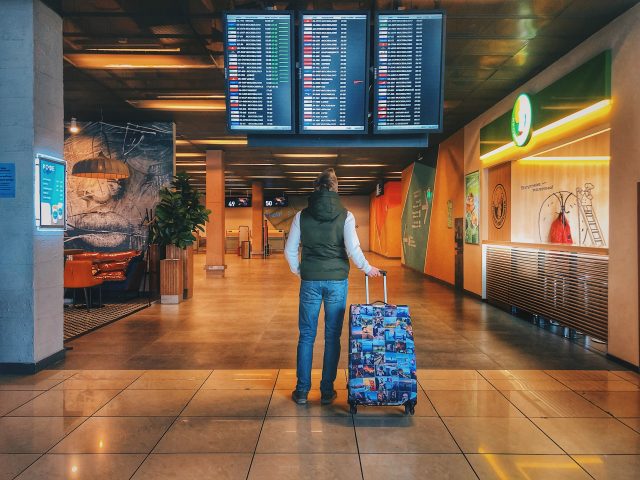Can we promote sustainable management in tourism field with the help of technology?

Sustainability is a trend that has been arising over the years. It is almost already overused term but especially when talking about traveling sustainability is a thing to consider in multiple perspectives. Another trend that has been arising in tourism field is information technology. People use it for almost everything, for example when buying travel related products or services, checking the weather forecasts of the destination or when wanted to be advised in some cases¹. Information technology and tourism are two very dynamic and growing industries in the world ³. Tourism in 2021 accounted 5,5% of global Gross Domestic Product and 272 million jobs in 2019⁵. These positive numbers also bring the aspect of necessity of responsibility for the stakeholders.
Sustainability is a wide term, and it is usually divided into social, environmental, and economic, which all cover a lot of different subcategories. The question of this blog post is how could information technology help to make tourism businesses work even more sustainable?

Dimensions of sustainability
In the past sustainability was seen as an image booster for a company if they utilised the term in their marketing plan. Nowadays it is a crucial part of both internal and external impacts of the company. The environmental aspect is usually the first one to come up when discussing the matter, and it is also the perspective of which majority of research papers have been conducted (10). However, sustainability can be divided into three sections and utilised from the stakeholders’ perspective:
- Social sustainability can mean for example job opportunities, health and safety, training and learning or interaction with the local community⁴.
- Environmental sustainability may include for example waste minimization and recycling, pollution prevention by reducing emissions or choosing sustainable transportation options (9).
- Economical sustainability can mean that the company is making profit and staying lucrative.
It is suggested that economic and environmental aspects of an organisation are at the end driven by social elements like equality, health, and education⁴.

Technology in the help of management tourism services
Technology can for example provide innovative information system processes, creative ways of structuring and qualifying the offer and managing payment systems in the tourism sector7. Thus, it can ease the workload of the stakeholders at some duties so that they can focus on other aspects instead.
IT can help to build closer relationships with suppliers and customers² . IT can also help to gain competitive advantage by lowering costs or improving customers’ satisfaction and offering them differentiating products or services² . The destinations and businesses are much harder to be found by the potential customer if they are not utilising technology, for example search engine marketing. That makes businesses basically increasingly dependent on IT if they prefer being sustainable also economically.
IT enable travellers to access reliable and accurate information as well as to undertake reservations basically anywhere and anytime. IT has improved the service quality and contributed to higher customer satisfaction² . Technology can help gathering data about the tourists for the destination (8). That can help the stakeholders prevent potential negative effects beforehand.

IT, tourism, and sustainability
Social media can enhance the tourist-tourist relationship which can increase social capital through reciprocity and cooperation⁸. This kind of real time interaction enables them to share value and knowledge before, during and after their travels.
Technology can influence positively but it is dependent on the people using it and their knowledge and intentions⁴. Managerial capabilities are on a key role for succeeding. The professionals in the tourism field are the key point but at the same time average tourism-related degrees are among the lowest (4). The study has shown that the gender of the employee might have an influence. Being a woman has a positive impact on the ability to use of technology to achieve sustainability. In a higher level of managerial capabilities, the gender didn’t have an effect anymore. ⁴
It is believed that future tourism depends on matching sustainability and resilience successfully. HAV, referring to hyperplace augmented reality, has been seen as a creative formula enhancing the sustainability of cultural tourism using technology.⁶ Also, blockchain, as an information technology, is capable of supporting to improve sustainability in tourism field (11).
Making sustainable choices, like investing in automated lights in the hotel rooms, can have cost saving impact for the tourist companies in the long run9. Communicating about them transparently can also be a sales appeal in the perspective of many tourists. The information the stakeholders share in digital media can help recipients to promote their social and environmental behaviours9. In other words, the message companies share in their social media or marketing distributions has an effect. Being and staying sustainable might need creation and innovation from the companies sometimes. Only those who can manage with these matters are able to survive in competition².
References:
- Gössling, S. 2017. Tourism, information technologies and sustainability: an exploratory review. https://doi.org/10.1080/09669582.2015.1122017
- Buhalis, D. 1998. Strategic use of information technologies in the tourism industry. https://doi.org/10.1016/S0261-5177(98)00038-7
- Liburd, J. 2005. Sustainable tourism and innovation in mobile tourism services. https://doi.org/10.3727/154427205774791771
- Broto, O., Puig-Denia, A. & Lapiedra R. 2021. How to Enhance Sustainability through Technology Usage: An Analysis of Managerial Capabilities and Gender in the Tourism Sector. https://doi.org/10.3390/su132313398
- World Travel & Tourism Council 2021. https://wttc.org/Portals/0/Documents/EIR/EIR2021%20Global%20Infographic.pdf?ver=2021-04-06-170951-897
- Marques da Silva, A. 2021. In Quest of a New AR Technology Application to Enhance the Sustainability of Cultural Tourism: The Olive Heritage in Madeira Through the Looking Glass of a ‘Sandbox’ Approach. https://doi.org/10.2478/ejthr-2021-0007
- Cantino, V., Giacosa, E., Alfiero, S., Riad Shams, S. M. & Ferraris, A. 2019. Introduction: Smart Tourism Business (Sustainability, measurability, awareness, recognition & technology). https://doi-org.ezproxy.uef.fi:2443/10.3727/108354219X15511864843786
- Dongwook, K. & Sungbum, K. 2017. The Role of Mobile Technology in Tourism: Patents, Articles, New, and Mobile Tour App Reviews. https://doi.org/10.3390/su9112082
- Camilleri, M. 2017. The Promotion of Responsible Tourism Management Through Digital Media. https://doi.org/10.1080/21568316.2017.1393772
- Tölkes, C. 2018. Sustainability communication in tourism – A literature review. https://doi.org/10.1016/j.tmp.2018.04.002
11. Erol, I., Neuhofer, I., Dogru, T., Oztel, A., Searcy, C. & Yorulmaz, A. Improving sustainability in the tourism industry through blockchain technology: Challenges and opportunities. https://doi.org/10.1016/j.tourman.2022.104628